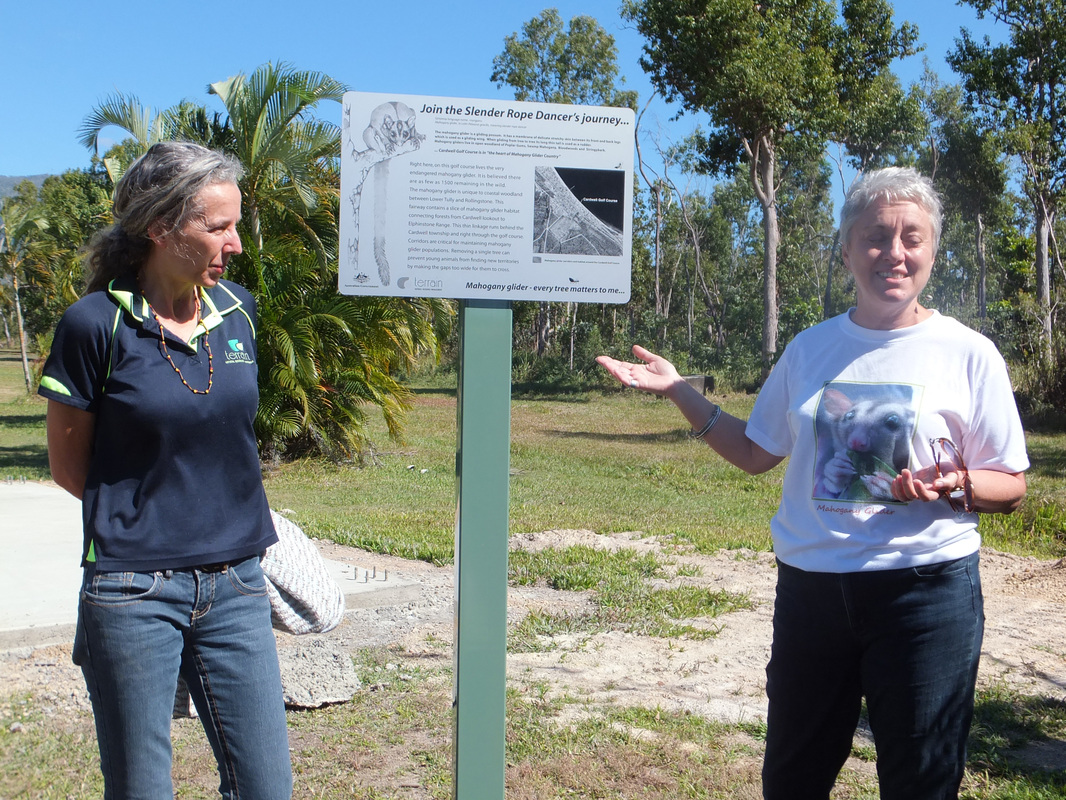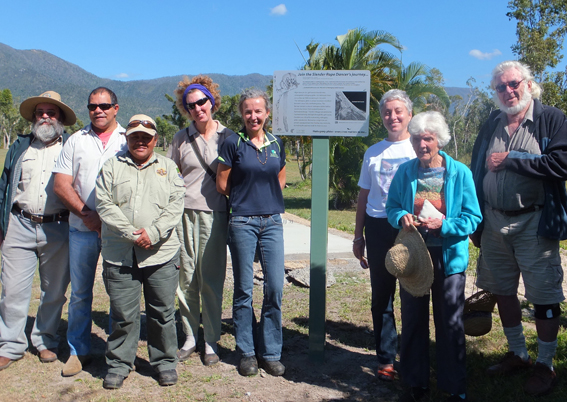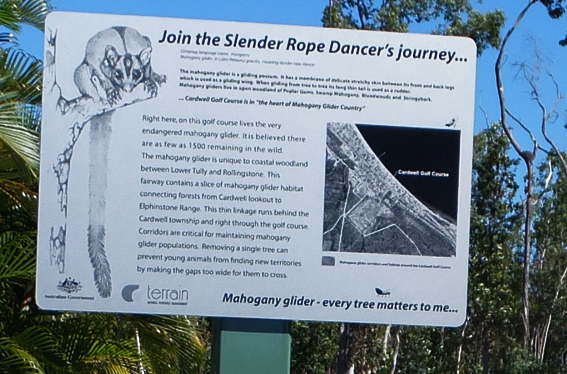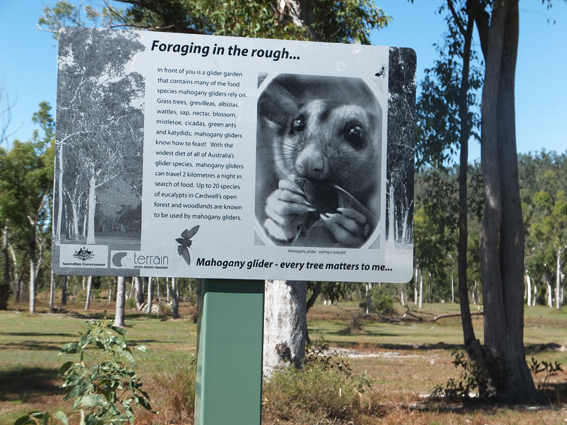| by LAWRIE MARTIN. Cardwell Golf Club members, take a bow. By beating back adversity and driving ahead for future benefits the club has created a sporting club world first and all deserve to take centre stage and acknowledge the applause. A decision by the club to adopt a leading role in the fight to save the habitat of highly-endangered mahogany gliders is meritorious and throws down the gauntlet to most caring people who live in this region. |
Cardwell and its environs suffered immeasurable damage and the Golf Club, with its nine-hole course in the ambit of the Country Club, was not excluded from the cyclonic outrage.
Trees lining the fairways were either felled or stripped of foliage. Branches were torn from some trees while others had roots loosened causing the vertically upright plants to lean, some dangerously.
| The huge clean-up which followed became a catalyst for a sound environmental decision. During a meeting involving representatives of conservation-minded groups held in the club house last month, Reconstruction Cardwell principal John Guyatt said club members had been unaware of the glider presence in the area. |
“The immediately contacted Terrain’s environmental recovery officer Tania Simmons who then set the recovery wheels in motion.”
These wheels spun quickly as Ms Simmons relayed the message to noted wildlife artist and registered carer Daryl Dickson and Queensland Parks and Wildlife senior ranger Mark Parsons.
| Both inspected the scene and found the glider, although stressed, was in reasonable physical condition but, because of the hollow’s depth, they were unable to capture the animal. “The glider was a male and his den was lined with leaves. This indicated a female was also nearby, because females dress up the nesting site. There were not any indications of young being present,” Ms Dickson said. “Mark (Parsons) and I agreed there would be no point served in harassing the little bloke further, so we made the site safe from predators and left him to his own devices. Next morning he was gone.” |
With assistance from Girrigun rangers suitable trees from C4 and Cassowary Coast Regional Council’s revegetation unit will be planted to form glider connectivity between the golf course and the football ground.
| This has proved to be music to the ears at the golf club. Mr Guyatt said the club had decided to make the endangered glider its own and promote efforts to raise awareness of its plight. “Daryl Dickson made available a number of photographic and drawn images which added to four boards telling important facts about the glider. These have been stationed at various tees (hit off points) around the course to provide information to all using the facility,” Mr Guyatt said. |
The four display boards were officially opened last Wednesday when a small group of enthusiasts assembled to welcome another step forward in the widening campaign to save mahogany gliders (Petaurus gracilis) from the unwanted fate.
Ms Simmons told the meeting she had been “sickened in the stomach” when, in answering the telephone, she had been told of a glider in a fallen tree.
“It came as a huge sickening shock,” she said. “But it appears as if the discomfort that little glider suffered may prove to be a lifesaver for many others of the species.”
Girringun Aboriginal Corporation chief executive officer Phil Rist said his organisation was proud to be associated with the golf club’s project and praised the efforts of the club’s membership.
“Looking around the course now and taking in all the work in progress there are times when the small, furry animals miss out on being included in the big picture,” Mr Rist said.
“But this is not the case here and we are proud to be involved in a project which is making Cardwell Golf Club the first sporting body in the world to develop habitat for mahogany gliders.”





